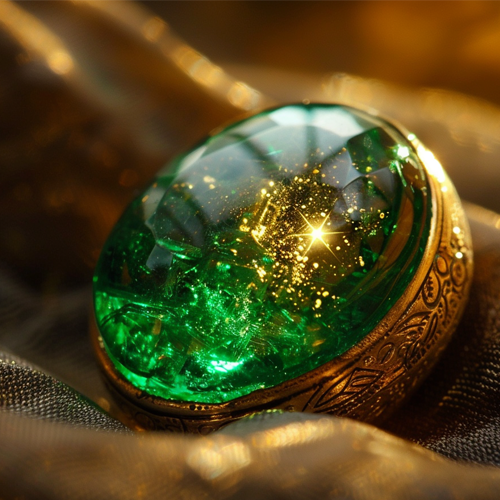The Cenote Chalice is steeped in mystery and reverence, its origins tracing back to the heart of the Incan Empire. Unearthed in the depths of a sacred cenote—a natural sinkhole considered a gateway to the spiritual world—this artifact is believed to have been a central component in rituals dedicated to Kukulacan, the serpent deity of water. For the Inca, water was more than a life-sustaining resource; it was a divine force that linked the heavens, earth, and underworld. The chalice served as both a vessel and a bridge, enabling priests to connect with the deities and harness their blessings for the people.
Legends surrounding the Cenote Chalice speak of its miraculous abilities. During times of drought, Incan priests would fill the chalice with water from the cenote and offer prayers to Kukulacan. It was said that the water, once blessed, could heal the sick, ensure bountiful harvests, and even grant visions of the future to those who dared to drink from it. However, such power demanded utmost respect. The chalice’s rituals were shrouded in secrecy, and only the most devoted priests were entrusted with its use.
The chalice’s discovery is a story as captivating as the artifact itself. In the early 20th century, a team of explorers, mapping underwater cave systems near the Andes, stumbled upon the cenote by chance. Among the offerings submerged in its depths, the golden chalice stood out, gleaming even in the dim underwater light. Local shamans warned the explorers against disturbing the sacred site, recounting tales of curses and divine wrath that had befallen those who disrespected such relics. Despite their warnings, the chalice was brought to the surface, where it immediately captured the fascination of archaeologists and mystics alike.
Accounts from those who have encountered the Cenote Chalice describe a profound sense of awe. Some claim to have experienced fleeting visions of ancient ceremonies, while others speak of hearing faint whispers in an unknown tongue. The water drawn from the chalice is said to have a peculiar quality, tasting impossibly pure and leaving those who drink it feeling invigorated yet overwhelmed by a sense of otherworldly connection.
However, the chalice’s power is not without peril. Tales abound of those who sought to exploit its properties for personal gain, only to meet tragic ends. One infamous story tells of a wealthy collector who displayed the chalice in his home, only to be plagued by relentless nightmares and inexplicable floods. Ultimately, the chalice was returned to a temple in Cusco, where it remains under the care of guardians who honor its sacred legacy.
Today, the Cenote Chalice symbolizes the profound relationship between humanity and the natural world. It stands as a reminder of the Incan belief in the sanctity of water and the enduring power of ritual. As a cultural and spiritual artifact, it continues to inspire wonder, embodying the mysteries of a civilization that revered the forces of nature as divine.



